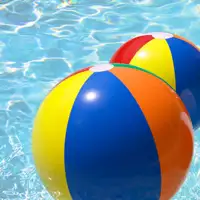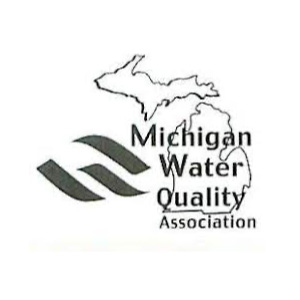For over 100 years, chlorine has been crucial in keeping our drinking water safe. Since the early 1900s, it has significantly reduced diseases spread through water. According to the Centers for Disease Control, “Chlorine was first used in the United States as a major disinfectant in 1908 in Jersey City, New Jersey. Chlorine use became more and more common in the following decades, and by 1995 about 64% of all community water systems in the United States used chlorine to disinfect their water.”
Today, chlorine is still the most common method of cleaning water worldwide. It effectively kills harmful germs that can cause serious illnesses.
However, using chlorine in water treatment is a balancing act. While it’s necessary for safe drinking water, too much chlorine can cause problems. The challenge is to use just enough chlorine to kill germs without harming people’s health or the environment. Getting this balance right is key to keeping people healthy while avoiding issues that come with using too much chlorine.
Benefits of Water Chlorination
Water chlorination offers numerous advantages, which is why it continues to be a preferred method in modern water treatment:
- Effective Disinfection: It effectively kills harmful bacteria and viruses. According to the CDC, “Using or drinking water with small amounts of chlorine does not cause harmful health effects and provides protection against waterborne disease outbreaks.”
- Long-lasting Protection: It continues to protect water as it travels through pipes to homes.
- Biofilm Prevention: It stops the growth of slimy layers (biofilms) inside pipes and tanks
- Taste and Odor Improvement: It can improve the taste and smell of water by removing certain compounds.
- Cost-Effectiveness: Chlorination is an affordable solution for large-scale water treatment.
These benefits show why chlorine remains important for providing safe, clean water to communities.
Recognizing Excessive Chlorine in Your Water
While chlorine is crucial for water safety, too much can be problematic. Here are some signs that may indicate higher-than-necessary chlorine levels in your water:
- Strong Chemical Smell: A pronounced chlorine or “swimming pool” odor.
- Unpleasant Taste: Water may have a chemical or bleach-like flavor.
- Skin Irritation: Dry, itchy skin after bathing or showering.
- Eye Discomfort: Redness or irritation in eyes after contact with water.
- Hair Issues: Unusually dry or brittle hair; faster fading of dyed hair.
- Respiratory Symptoms: Coughing or difficulty breathing in steamy environments like showers.
- Fabric Discoloration: Accelerated fading of clothes washed in chlorinated water.
- Plumbing Wear: Increased corrosion of plumbing fixtures over time.
- Plant Stress: Houseplants may show signs of distress when watered with tap water.
If you notice several of these signs, it may be worth investigating your water’s chlorine levels further.
Potential Risks of Excessive Chlorination
While chlorine is essential for water safety, over-chlorination can lead to several concerns:
- Disinfection Byproducts: Excess chlorine can react with organic matter to form potentially harmful compounds. According to the Minnesota Department of Health, “During water treatment, chlorine can combine with naturally occurring organic matter in the water to form compounds called disinfection byproducts (DBPs). DBPs can cause negative health effects after regular, long-term exposure.”
- Respiratory Issues: High chlorine levels in enclosed spaces might worsen breathing problems.
- Gastrointestinal Effects: Some research suggests that highly chlorinated water might impact gut health.
- Taste and Odor: Overchlorinated water can have an off-putting taste and smell.
- Pipe Damage: Excessive chlorine can accelerate corrosion in water distribution systems.
- Environmental Impact: Highly chlorinated water discharge can harm aquatic ecosystems.
It’s important to know that water treatment plants must keep chlorine levels within safe limits in the United States. However, levels can vary in different areas; some people may be more sensitive to chlorine than others.
Solutions for Chlorinated Water
While chlorine is important for cleaning public water, many people want to reduce or remove it from their home water supply. This is often because of concerns about taste, smell, or possible long-term health effects. Luckily, there are several good ways to treat chlorinated water at home:
- Advanced Carbon Filters: These filters use a special material called activated carbon to remove chlorine and other unwanted substances from water. As water passes through the filter, the carbon traps these substances. Carbon filters are great at improving taste and smell. They come in different forms, from pitchers in your fridge to systems that treat all the water in your house.
- Reverse Osmosis Systems: Reverse osmosis (RO) is a more thorough way to clean water. It doesn’t just remove chlorine—it takes out many other contaminants, too. In an RO system, water is pushed through a very fine membrane that blocks impurities, resulting in very clean water. You can install an RO system under your kitchen sink or get one that treats all the water in your home.
- UV Purification: UV purification uses ultraviolet light to kill harmful microorganisms in water. While it doesn’t remove chlorine by itself, it’s often used along with carbon filters for better water treatment. The UV light damages the DNA of bacteria and viruses, which stops them from reproducing. This method doesn’t add any chemicals to your water.
It’s important to know that while these methods make your water cleaner, they also remove chlorine’s ability to keep killing germs as water moves through pipes. This means you need to take good care of your water treatment system to keep your water safe. You’ll need to change filters regularly, clean membranes in RO systems, and replace UV lamps when needed.
When choosing a water treatment method, consider what’s in your water that you want to remove, how much you’re willing to spend, how much maintenance you can handle, and whether you want to treat all your home’s water or just the water from one faucet. Getting your water tested is a good idea to determine which treatment method is best for you.
Kohley’s Superior Water Treatment Solutions
At Kohley’s Superior Water, we’re committed to providing safe, great-tasting water while maintaining optimal chlorine levels. Our expert team offers customized water treatment solutions to meet your needs and preferences.
We provide various services, from water testing and analysis to installing and maintaining advanced water treatment systems. Whether you’re on a municipal water supply or a private well, Kohley’s Superior Water has the expertise to ensure your water is clean, safe, and pleasant to use.
Ready to improve your water quality? Call Kohley’s Superior Water today at (800) 686-3224 or fill out our online form for a free water analysis and consultation. Let us help you achieve superior water in your home or business.



